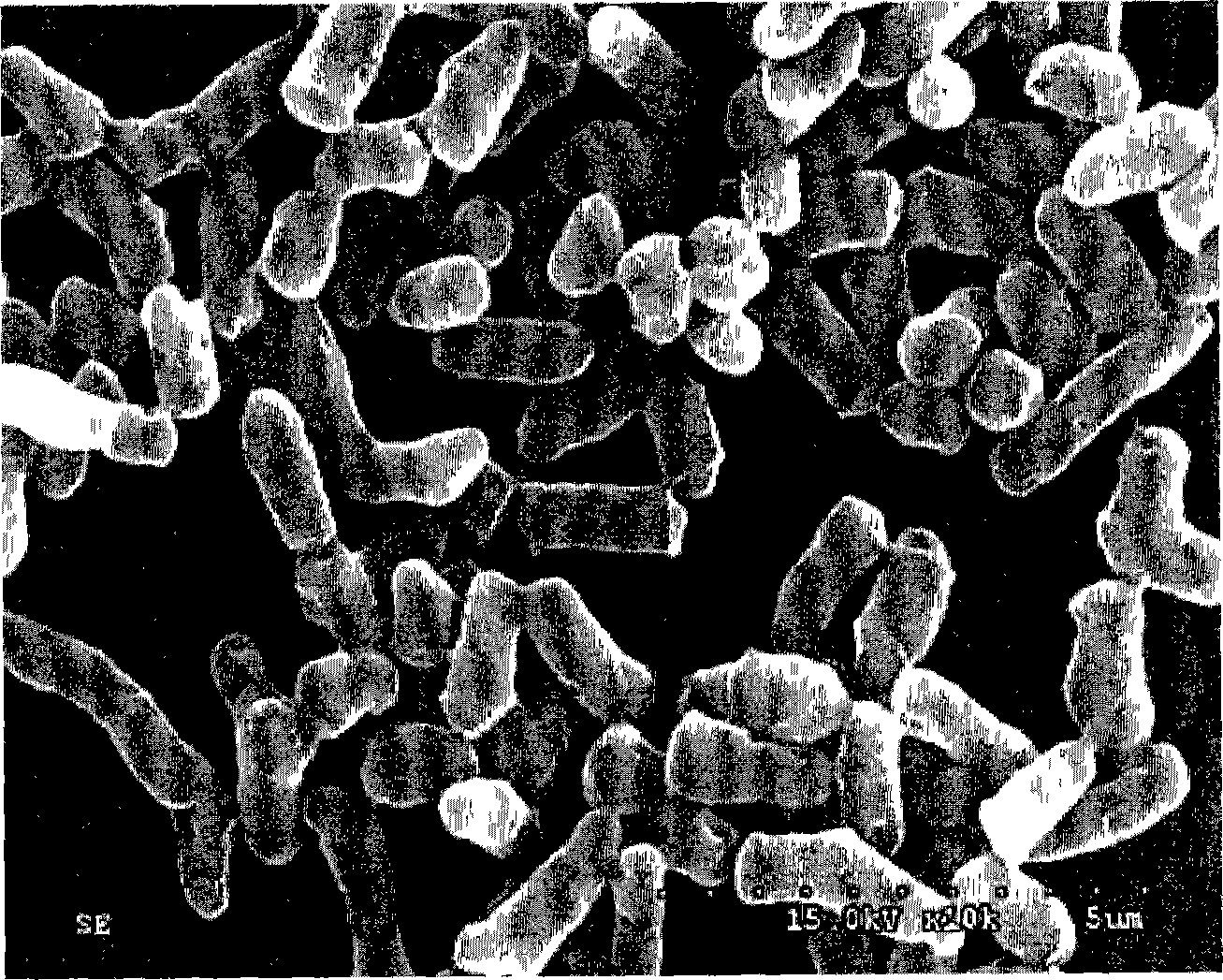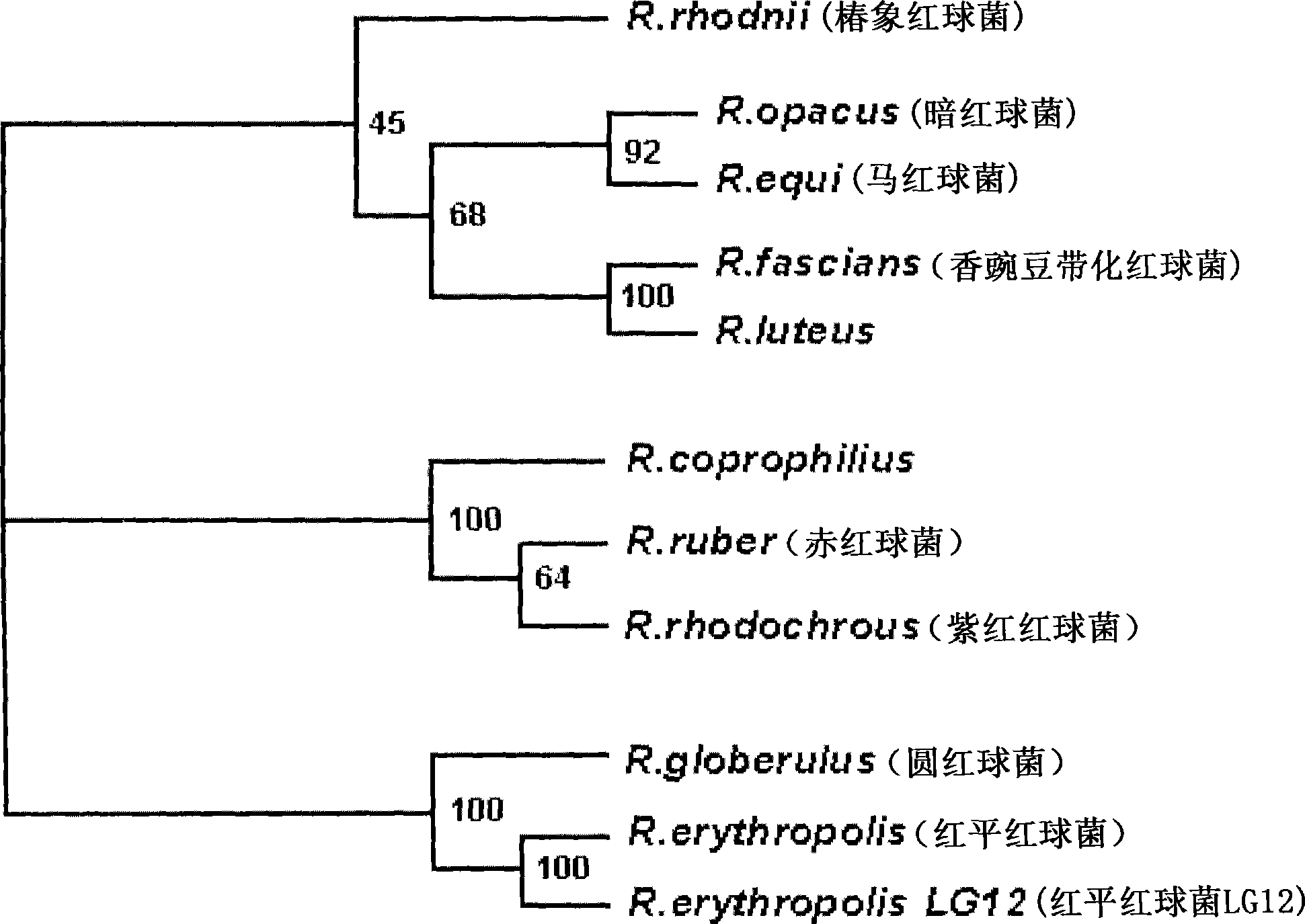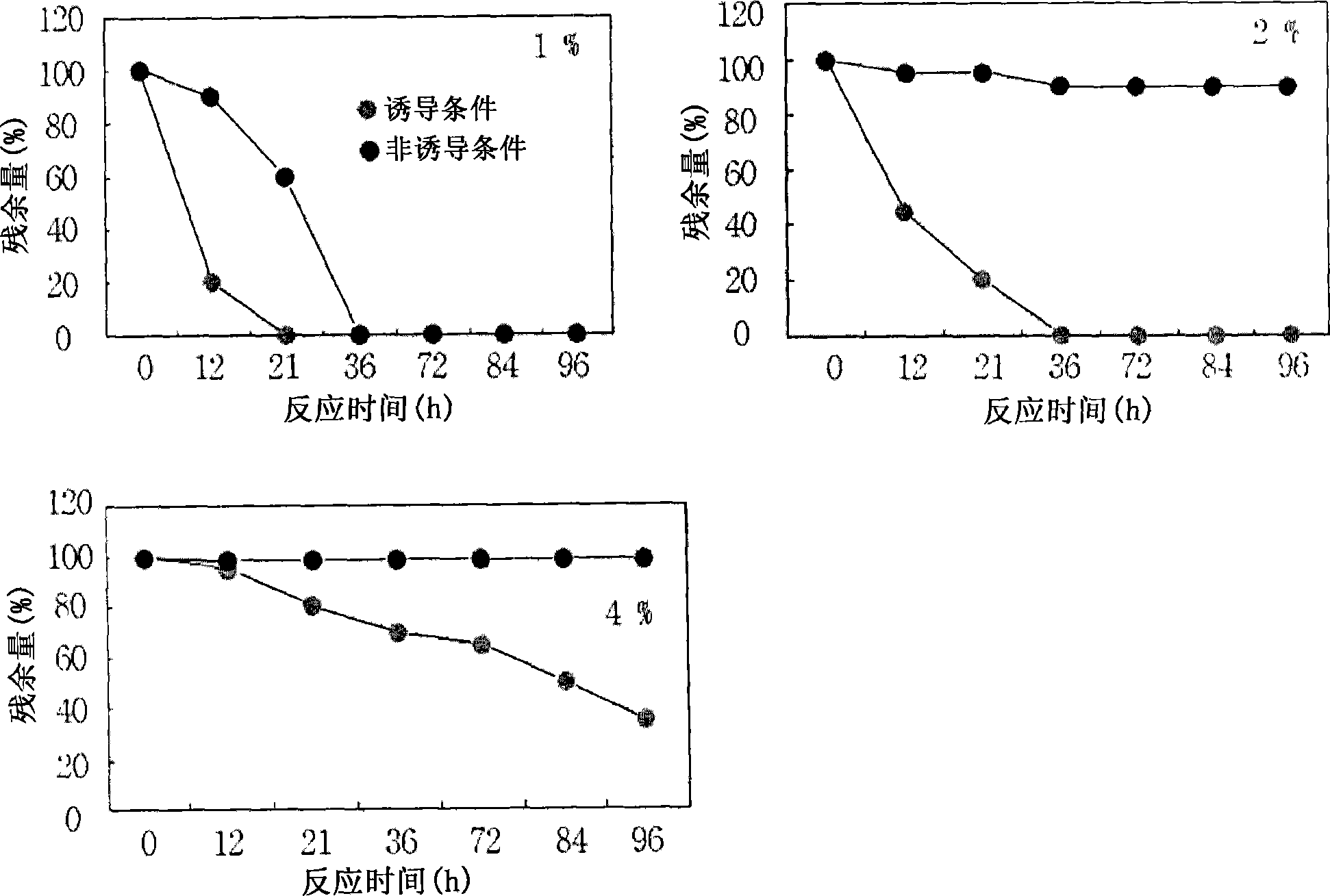Rhodococcus erythropolis LG12 having acrylic acid degrading activity and method for removing acrylic acid using the same
A technology of Rhodococcus erythrophyllum and Rhodococcus erythropolis, which is applied in the direction of using bacteria, methods based on microorganisms, chemical instruments and methods, etc., and can solve the problems of unknown degradable and non-degradable acrylic acid
- Summary
- Abstract
- Description
- Claims
- Application Information
AI Technical Summary
Problems solved by technology
Method used
Image
Examples
Embodiment 1
[0021] Example 1: Isolation of microorganisms from soil using acrylic acid as a carbon source
[0022] The soil near the highway in Jeongeup, Jeollabuk-do, South Korea was collected and dried at room temperature for 24 hours. 1.0 g of dry soil samples were added to 50 ml of baffle flasks (baffle flask) containing 5 ml of acrylic acid (2 mM) in 20 ml of liquid medium (see Tables 1 and 2; the following procedure was the same), and heated at 200 rpm, 30 Cultivate in a shaking incubator for 3 days. Then, 1 ml of the culture solution was added to 20 ml of freshly prepared liquid medium, and cultured under the same conditions as above. This process was repeated three times, and then, the culture was plated on LB plate medium and incubated at 30°C. After the cultivation was completed, a novel strain using acrylic acid as a carbon source was isolated from the colonies of the LB plate medium and named "2HPL".
[0023] [Table 1]
[0024] components
[0025] [Table 2]
[0...
Embodiment 2
[0028] Example 2: Identification of isolated 12HPL strains
[0029] In this example, the 12HPL strain isolated in Example 1 was identified by electron microscopy and molecular biology methods.
[0030] (1) Morphological characteristics of electron microscope
[0031] First, the 12HPL strain was coated on LB plate medium and cultured at 30°C for 3 days. Then, the morphological characteristics of the cultures were observed by scanning electron microscopy ( figure 1 ). figure 1 Scanning electron micrographs of the 12HPL strain are shown. Such as figure 1 As shown, the 12HPL strain has the characteristic of elongated cylinders commonly observed in Rhodococcus sp. known in the art.
[0032] (2) Classification by comparison with 16S rRNA nucleotide sequence homology
[0033] First, chromosomes were isolated from the 12HPL strain using the Wizard Gene DNA Purification Kit (Promega, catalog number: A1120). Then, 16S rRNA was amplified by PCR using the isolated chromosome as a t...
Embodiment 3
[0036] Embodiment 3: Measuring the acrylic acid degradation activity of Rhodococcus erythropolis LG12
[0037] In this example, the acrylic acid-degrading activity of Rhodococcus erythropolis LG12 was analyzed in comparison with other various microorganisms.
[0038] Each microbial colony cultured on the LB plate medium was inoculated and cultured in 3 ml of YEPD liquid medium (10 g / L yeast extract, 20 g / L peptone, 20 g / L glucose). 0.3 ml of the obtained culture was added to a 15 ml disposable test tube (Falcon Company) containing 3 ml of YEPD liquid medium, and cultured in a shaking incubator at 200 rpm and 30° C. for 2 days. Then, acrylic acid was added to the medium so that the final concentration was 1%, and 1 day later, the residual acrylic acid concentration was analyzed by high performance liquid chromatography (HPLC) (Waters). The mobile phase in the liquid chromatography was a 7:3 mixture of water and acetonitrile, the flow rate of the solvent was 1 ml / min, a Capcel ...
PUM
 Login to View More
Login to View More Abstract
Description
Claims
Application Information
 Login to View More
Login to View More - R&D
- Intellectual Property
- Life Sciences
- Materials
- Tech Scout
- Unparalleled Data Quality
- Higher Quality Content
- 60% Fewer Hallucinations
Browse by: Latest US Patents, China's latest patents, Technical Efficacy Thesaurus, Application Domain, Technology Topic, Popular Technical Reports.
© 2025 PatSnap. All rights reserved.Legal|Privacy policy|Modern Slavery Act Transparency Statement|Sitemap|About US| Contact US: help@patsnap.com



